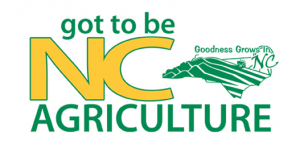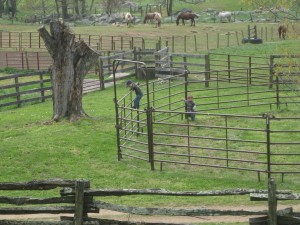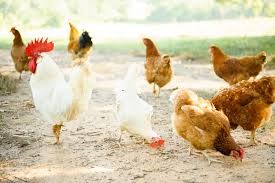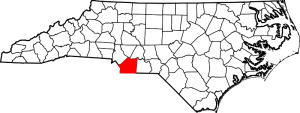We had the opportunity to learn about water in India back in January 2014 when Mrs. Monaghan and a Room with a View students introduced us to Francis who was helping in Mettupalayam.
So again he is helping us out learning about Agriculture and Farming around the world and this is what he had to share with us. He also shared a power point of slides for us to use.
We thank our friends around the globe that help us with our projects about the world.
Hello again, this is Francis, replying to your questions. I am still here in Mettupalayam, a small village near Utherimerur, in Tamil Nadu, South India. If you are able to look on Google Earth, you will find the town of Utherimerur, (Uttiramerur) then you need to travel westwards along the main road, and just after Karanimandapam, there is a road going south leading to our village. You can see our school buildings as a large rectangular block on the south side of the village. The village consists of around 70 houses, mostly now built of concrete but some still built with mud walls and roofed with palm leaves. I will try to email some pictures to you later to illustrate the information which I give below.
Many of the villagers still live a traditional way of life, keeping sheep, goats and cattle, and there are now two large flocks of ducks also in the village. Each day, villagers and children, when they aren’t at school,take the livestock out into the countryside to graze. They will spend all day looking after their animals, bringing them back before dark. The goats, sheep and ducks are reared for meat, but as most of the people here are Hindus, they don’t eat beef and so the cattle are kept for their milk with the male calves being reared to become oxen for pulling carts. The villagers will also work in the fields, being paid a daily wage for rice planting, weeding, or harvesting crops.
Some villagers have small plots of land, mostly between 1-4 acres which they use to grow crops, mainly rice. This depends upon the monsoon rains, which come around October to November. The villagers are able to collect water in large wells and then pump the water into the paddy fields as the rice plants need to grow in wet fields. The rice takes around 120 days to grow and can then be harvested. This is still partly done by hand, using sickles, although if the fields are allowed to dry, then sometimes, the farmers will hire a combine harvester. Before planting the fields, they are ploughed, again often using a wooden single furrow plough pulled by two oxen, but sometimes by a hired tractor. After harvesting, if done by hand, the rice paddy needs to be threshed, to remove the grains of rice from the stalks, and this is sometimes done on the roads, allowing cars and buses to run over the paddy to help! Most of this rice will be sold through the Government Regulated market- the Government set the prices to control supply!
After the rice grains are collected, the paddy straw is kept as animal fodder for the livestock.
Other main crops grown in this area are groundnuts (peanuts) which grow well when there isn’t much rain, coconuts, tender coconuts grown for their milk, fruit trees such as mangoes, guavas, jackfruit etc. A few farmers grow pulses, and vegetable crops such as ocra, brinjal (aubergine), green chillies, pumpkin, watermelon, cluster beans etc.
Mainly root vegetables are grown in the much higher land where the temperature is cooler, so potatoes, onions, sweet potatoes, and carrots whilst much is also grown in the north of India, again being cooler climate.
Most villagers will buy in all their vegetables from local markets, at least every week, although there is a market held everyday in villages and towns around Mettupalayam. There are also many shops selling fruit and vegetables, as well as eggs, chickens ( for meat) and fish which is brought in from the coast, about 40 miles away. In the nearby town of Utherimerur, there is one, western style, supermarket which sells mostly Indian foodstuffs, but also many small shops selling other goods. Many poor people in the rural areas still depend upon a monthly ration of poor quality rice provided free by the Government.
South Indian food is very different from northern Indian food, it is based around boiled rice and vegetables, spiced with garlic, chilli, Dahl, and spices such as cumin, cinnamon, coriander, seeds, cardomon, bay leaves, pepper corns, curry leaves, and Garam Marsala powder-a mix of these ground spices. Most villagers can only afford to eat meat as a treat, on special occasions.
For breakfast, many times there is only left over boiled rice with possibly some vegetable korma or Sambhar- a runny sauce with spices and some vegetables. The main meal of the day will usually be at night, when the family have returned from the fields after their days work. This will be boiled rice with vegetables. During the dry season, the village women will cook their rice and sauces outside on a wood fuelled fire- they will have collected the wood earlier on their way back from the fields. When the monsoon comes, they have to try to cook indoors, which is very unhealthy, with the smoke filling their houses!
The villagers generally have very little furniture in their houses,but most now have a small television provided by the last Government. The keep their food in metal or plastic pots, but the raw vegetables are generally stored inside the house either on the floor or on a shelf. They don’t have refrigerators.
Some villagers now have work that pays more than they can earn working in the fields. At our primary school, every child in the village has access to schooling and we also provide a substantial, nutritious mid-day meal, and morning and afternoon snacks. We also try to help them go on to secondary school. India is a very quickly developing country, and education is so important to enable them to enter better paid work.
Our primary school is a free school, so parents don’t have to pay for their children to attend. School is six days every week with Sunday’s as a rest day. The children arrive around 8.30 and clean the classrooms and the playground. Assembly is at 9.00, break time 11.00, lunchtime is 12.30 to 1.30, another break at 3pm and the last hour is often used for playing games etc. School ends at 4pm with another general assembly. Currently there are around 80 children at our school, from 4 villages around Mettupalayam. These also include children from a tribal village where there is a community of Kuruvi people. These people generally have a nomadic lifestyle, moving from place to place, putting up temporary shelters and finding food by hunting, fishing and looking for roots and berries to eat. They also sell beads, herbal medicines and other things on the roadside. Many of them now have small motorbikes to travel around on and it is common to see a whole family of 5 or 6 on one motorbike! This week, whilst I have been here,there have been three new students from the Kuruvi community, all starting in the youngest group. One girl is called Arsini, she is the youngest in her family and she has ten brothers and sisters.this is unusual, but the Kuruvi families do tend to have far more children than villagers, it is now usual for parents only to have two children.
The Kuruvi tribal people have their own language and different customs to the villagers but they also speak Tamil, the local language. Many of them also now speak some English, as this is taught in schools.
Well, I think that is a lot of information for you to think about. I will try to email some photos to your teacher to share with you, and if you are able to access Facebook, we have a blog Friends of Mettupalayam which contains more pictures and stories.
Very best wishes and good luck with your studies
Francis












